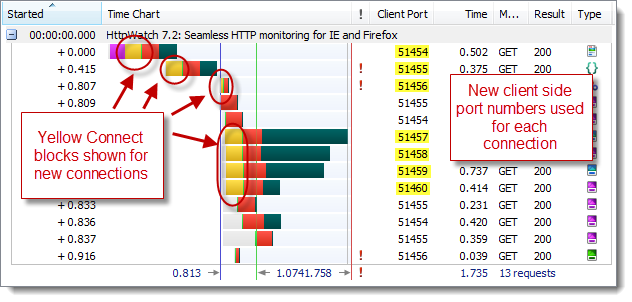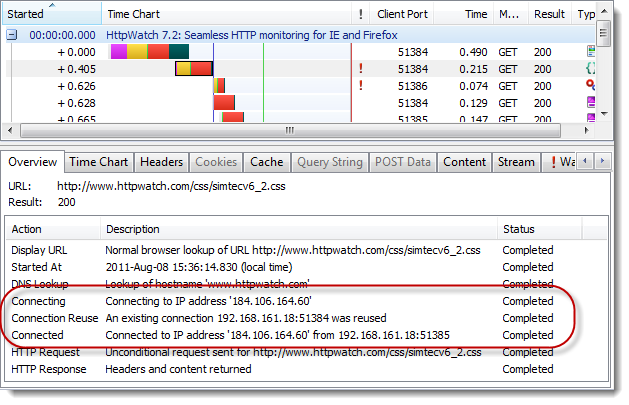Just in Time Connection Reuse in Firefox 6
Firefox 6 is almost ready for release and we have updated HttpWatch to work with the latest beta versions . While doing this we noticed some unexpected behavior in the way that it creates new connections.
Normally, in HttpWatch you can see when a browser uses a new TCP connection by looking for the yellow Connect block in each request. You can also confirm this by adding a Client Port column to the main grid. Here’s screenshot from HttpWatch showing new client ports being used as new connections are made to the web server:
In Firefox 6 we noticed that existing connections were sometimes re-used even though a request had a Connect phase:
On closer examination we found that Firefox 6 may reuse an existing connection even though it has already started to connect a new socket. The new actions on the Overview tab show exactly what is happening:
Initially, there was no idle connection available for the CSS file download because the first connection was still being used by the request for the page’s HTML. Firefox 6 therefore started to create a new TCP connection to the host. In older versions of Firefox it would simply have waited for the new connection to be completed and then would use that connection to dispatch the second request.
However, in this case Firefox 6 reused the initial connection (port 51384) when it became available even though it was still in the process of setting up a new connection. This new connection (port 51385) wasn’t wasted though. Its setup was completed in the background and the connection was reused by another request further down the water fall time chart.
Sometimes, you’ll even see a case where the new connection is correctly setup but Firefox 6 still reuses an existing connection:
So why does Firefox 6 aggressively reuse existing connections instead of new connections? There are two main reasons:
- If an existing connection becomes available before the new connection is setup it means the HTTP request can be sent off sooner
- Existing connections will usually have a larger TCP congestion window and allow greater throughput.




